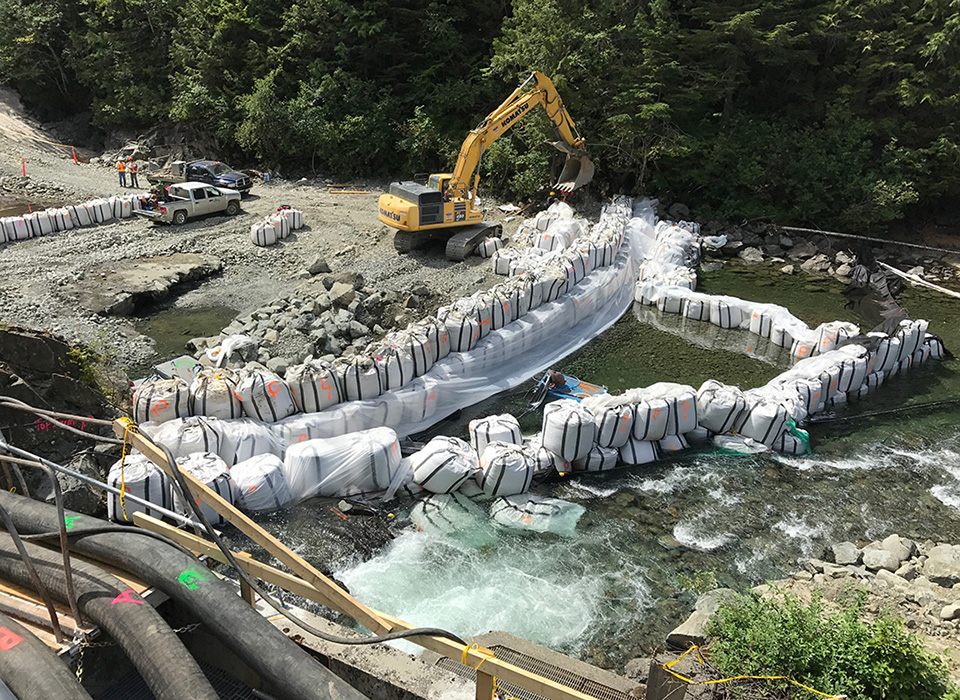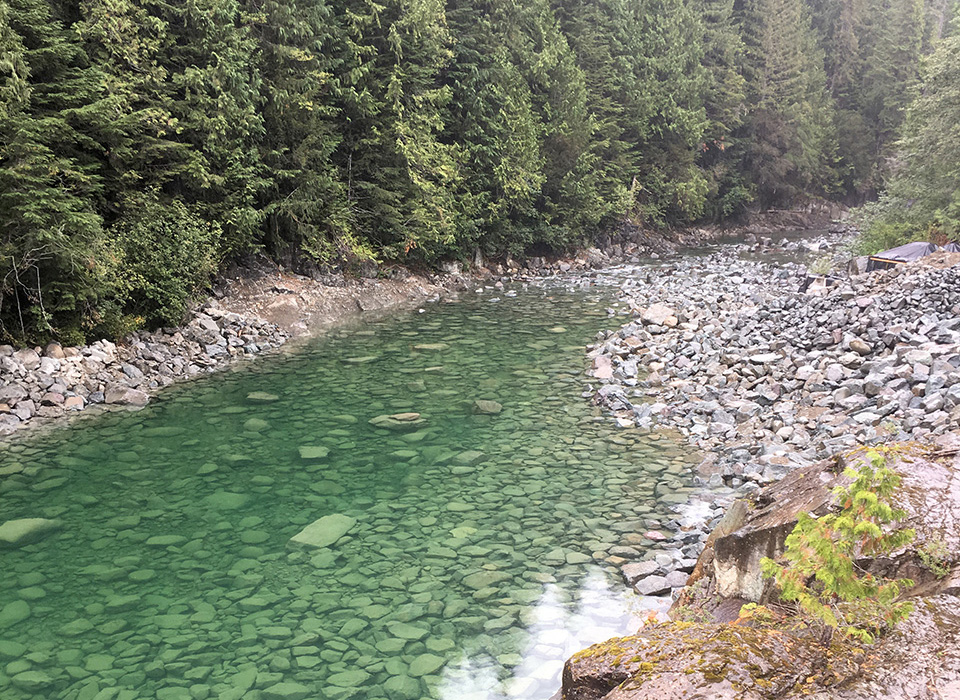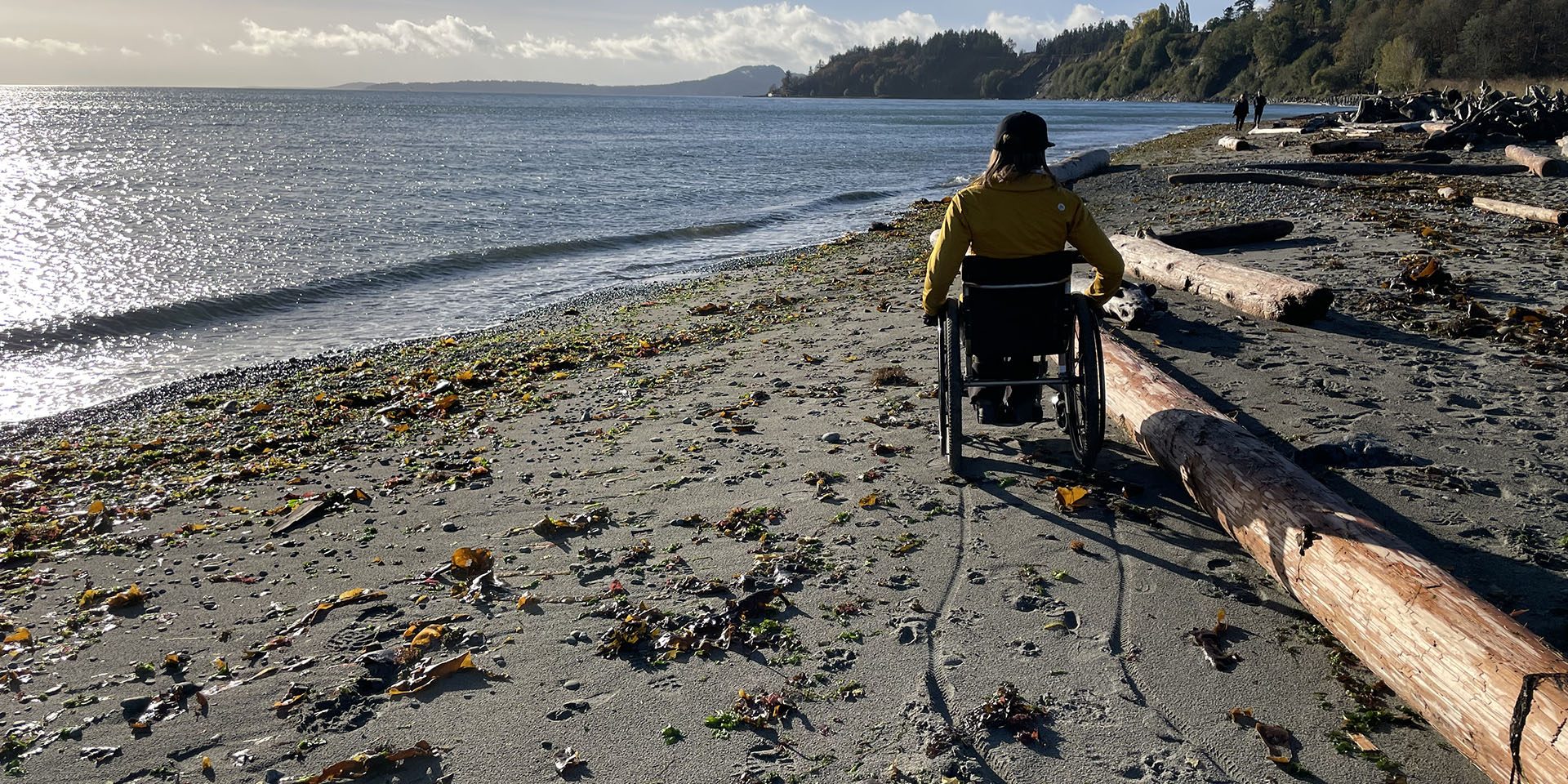Water Management for the Salmon River Dam Decommissioning
2017 | Near Campbell River, BC
During the summer of 2017, BC Hydro’s 60-year old creosote timber dam was completely removed from the Salmon River on Vancouver Island, and the site was re-naturalized. The decommissioning involved many agencies, community stakeholders, regulators, contractors, engineers, and environmental monitors who worked closely together under a very tight timeframe.
McElhanney was retained by the Kwikw contracting group (a partnership between a local First Nations group and local contracting companies) to provide design and engineering services for two temporary river bypass channels around the de-construction site so the dam could be safely and quickly dismantled “in the dry.”
McElhanney designed bypass channels, cofferdams, and river diversion works to use as small a footprint as possible in this narrow and hectic worksite. McElhanney also designed the temporary access roads and bridge crossings to allow the construction vehicles to work efficiently around the work-site. McElhanney also provided various other services to the contractor throughout the project, including: design of temporary settling ponds; phasing/logistical plans of the entire work-site; crane lifting and demolition plans for other structures nearby to the dam; structural engineering for temporary concrete structures during construction; and geotechnical review for deep excavation and water management adjacent to the dam.
This site also presented challenges in cutting off the inflow of water to the work area, including highly conductive substrate materials and uneven bedrock depth. The challenges were compounded due to the schedule constraints for this work; the in-stream works had to be completed in just 2.5 months from July 1st to September 15th.
McElhanney’s cofferdams and bypasses held fast and dry during the project duration. Our design proved robust and adaptable to site and contractor needs. Within only weeks of the project completion there were reports of salmon and other fish species in the newly re-naturalized river channel where once stood the timber-crib dam structure.
The project earned the 2018 Water Management Award of Excellence from the Canadian Water Resources Association.



